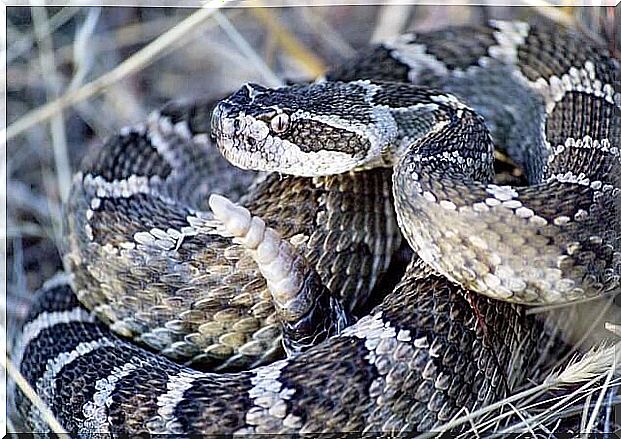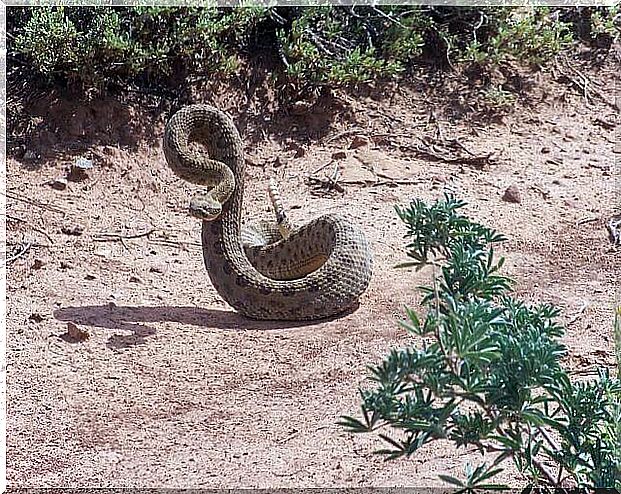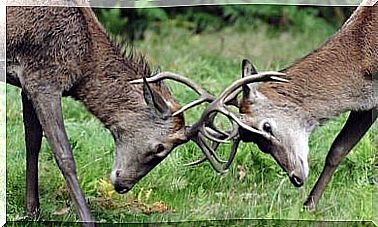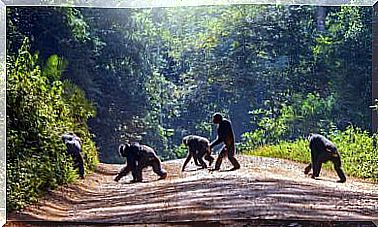Rattlesnakes: A Poisonous Species From North America

Rattlesnakes belong to the family of vipers, specifically the genus Crotalus. They are endemic animals of the American continent, and their populations are distributed from Canada to the north of Argentina.
The most characteristic thing about rattlesnakes is their tail, for which they receive their name. There are more than 20 recognized species of rattlesnakes and they are the most poisonous snakes in North America.
Differences between vipers and snakes
As we have discussed, rattlesnakes belong to the viper family. Snakes are normally poisonous, although not all of them are considered dangerous, and snakes generally are not, or at least cannot inoculate a poison that can cause us serious harm.
To differentiate a viper from a snake, we look mainly at its snout and its scales. Vipers usually have smaller, faired scales and a pointed snout. Snakes are usually larger, have the largest body scales, may or may not be caned, and do not have a snout.

These are all generalities, since each species may have its own peculiarities, so as a precaution, if we find a snake and suspect that it may be poisonous, it is best to move away. They tend to be more afraid of us than we are of them.
Rattle or rattle
These snakes are recognized from meters away by the sound of their bell. The rattle or rattle is a structure of bony discs that collide with each other with movement and make a characteristic rattle sound.
The age of one of these snakes can be calculated by the appearance of its rattlesnake, which appears as they grow; juvenile specimens may not present it.
Rattlesnakes can exceed two meters and weigh up to four kilos. They are not very large snakes, but their venom can be deadly, although they do not attack on their own, only when they feel in real danger.
The noise they make with their tail is a warning sign when they feel threatened to deter their opponent. Of course, each species can be more or less excitable on its own, for this reason caution is recommended against one of these snakes.
Where can we meet these rattlesnakes?
Most of them prefer desert climates and are rarely found in moist soils. They can also be found in abandoned termite mounds, cereal plantations, coffee or near farms, especially in the barns where the cereal is kept, due to the presence of rats that serve as food. This is where the danger of being easily bitten by a rattlesnake lies.

In general, they are not arboreal species and are found on the ground, although there are exceptions among the species and, if there is abundant rain, they are capable of climbing looking for drier areas.
In areas where it is common to find rattlesnakes, the use of long pants and closed shoes is recommended, in addition to being vigilant on the ground and always having the nearest medical center or an antidote at hand.
Rattlesnake Venom
The rattlesnake bite is very feared for its venom, and it is used to paralyze and kill large prey. Its venom is highly toxic : it can cause paralysis, internal bleeding due to destruction of the membranes of veins and capillaries, necrosis and cardiac arrest.

The bites must be treated as quickly as possible, there is an antidote that reverses the effect of the poison and it must be applied immediately. However, the antidote does not cure the effects that the poison may have caused, neutralizes its action, prevents mortality, but does not cure possible injuries such as necrosis.
Immunization against poison
The injection of small doses of venom induces the production of antibodies, but after the doses are finished, the level of antibodies drops to zero. If you travel to a country where these snakes are abundant, you should learn how to avoid them and how to act before a bite.









